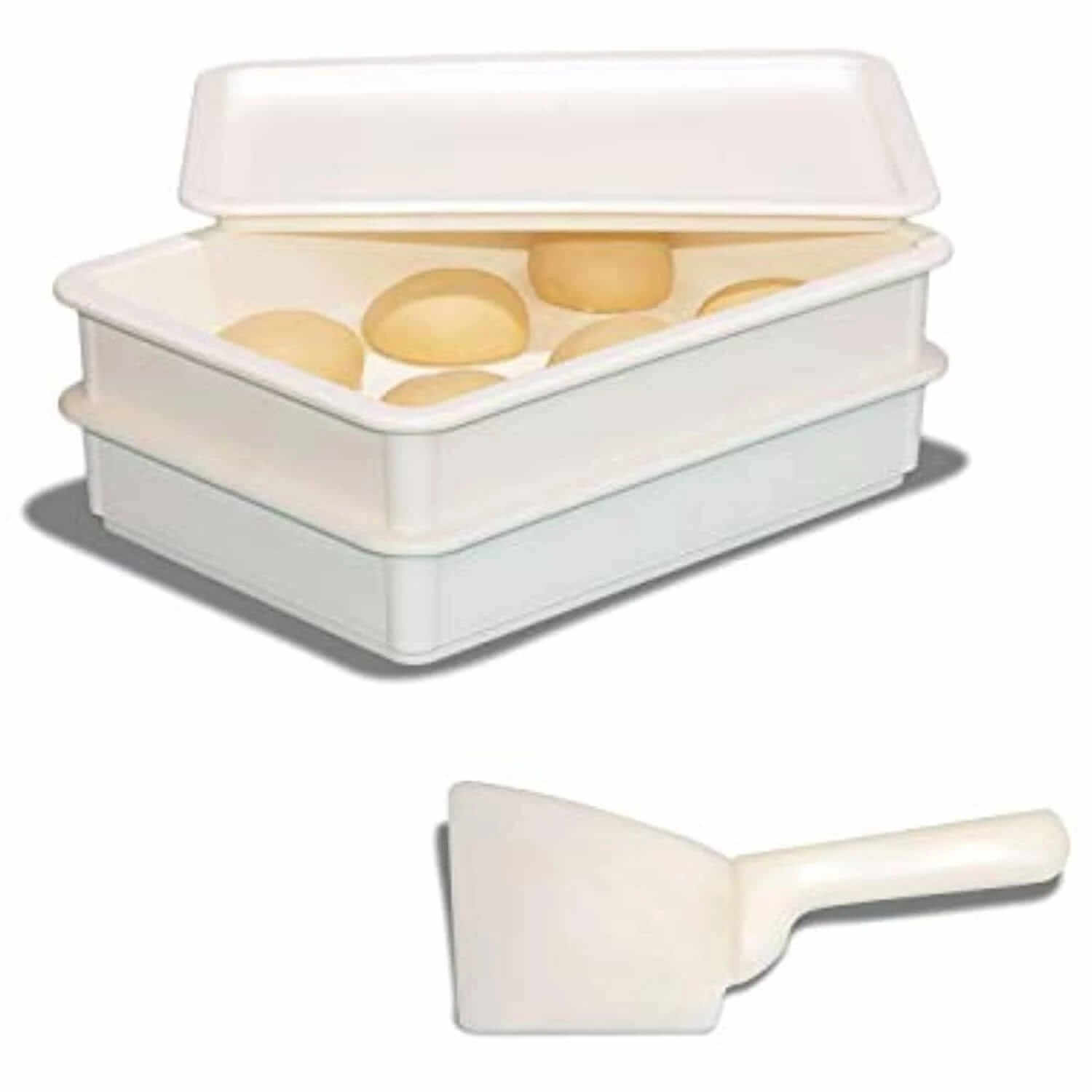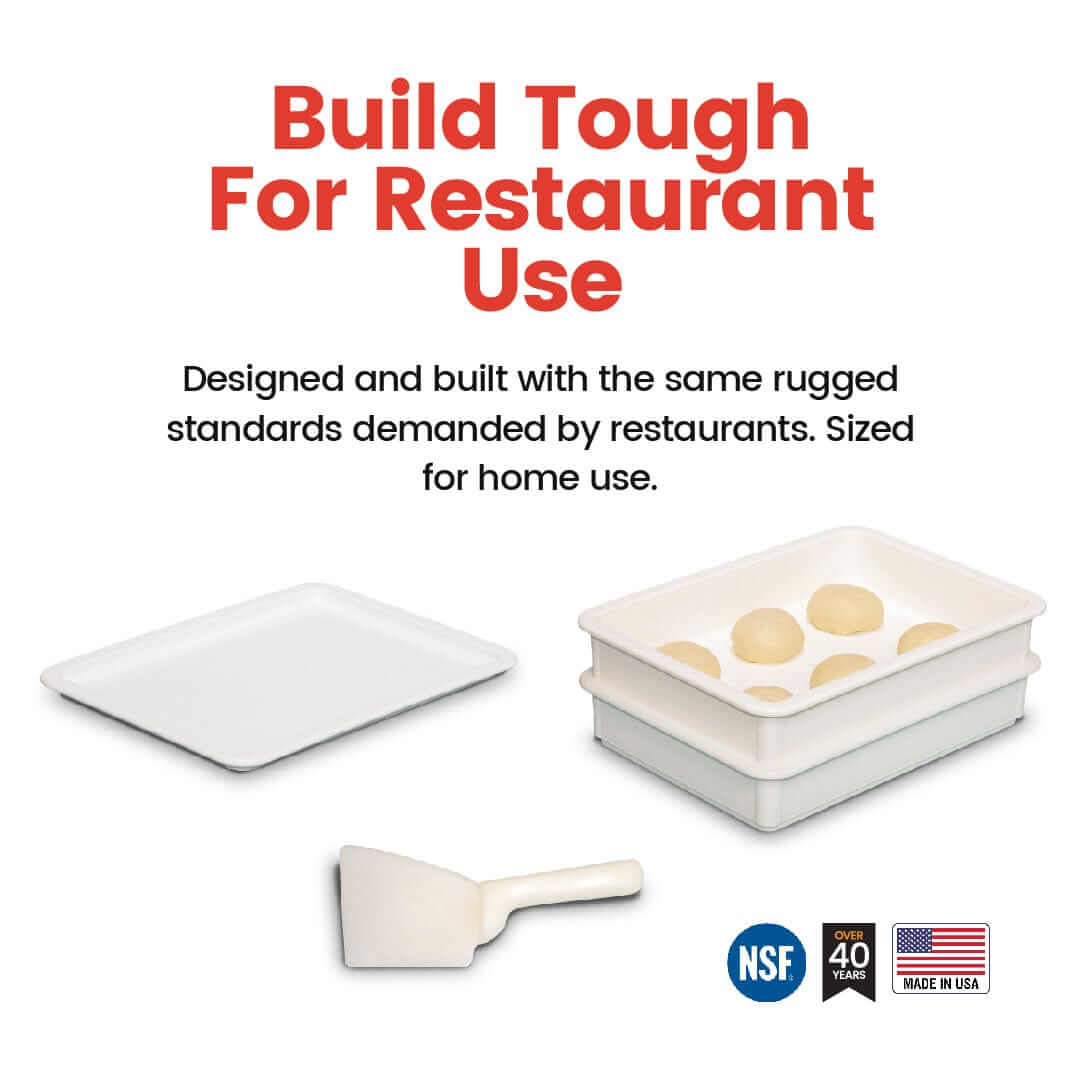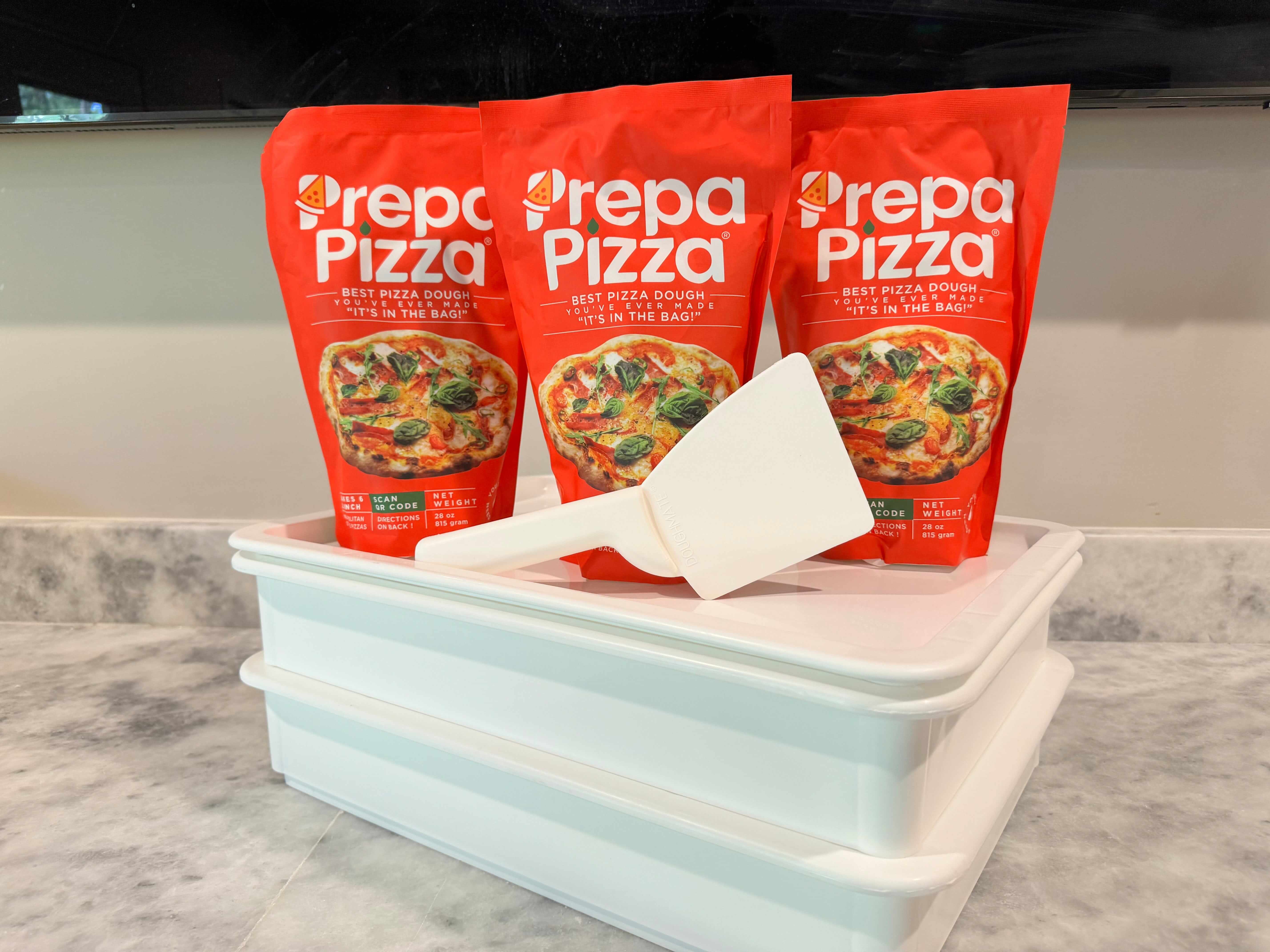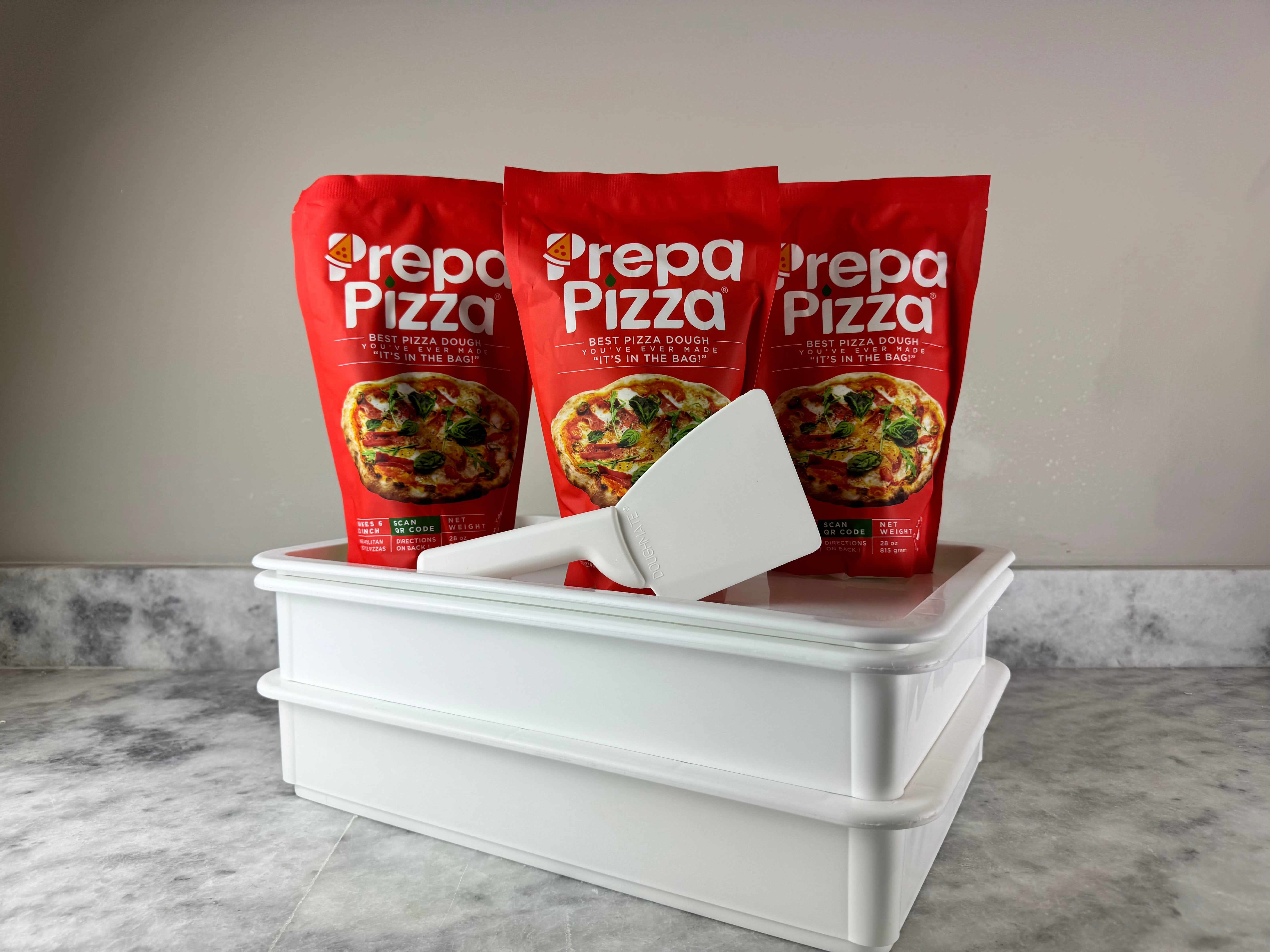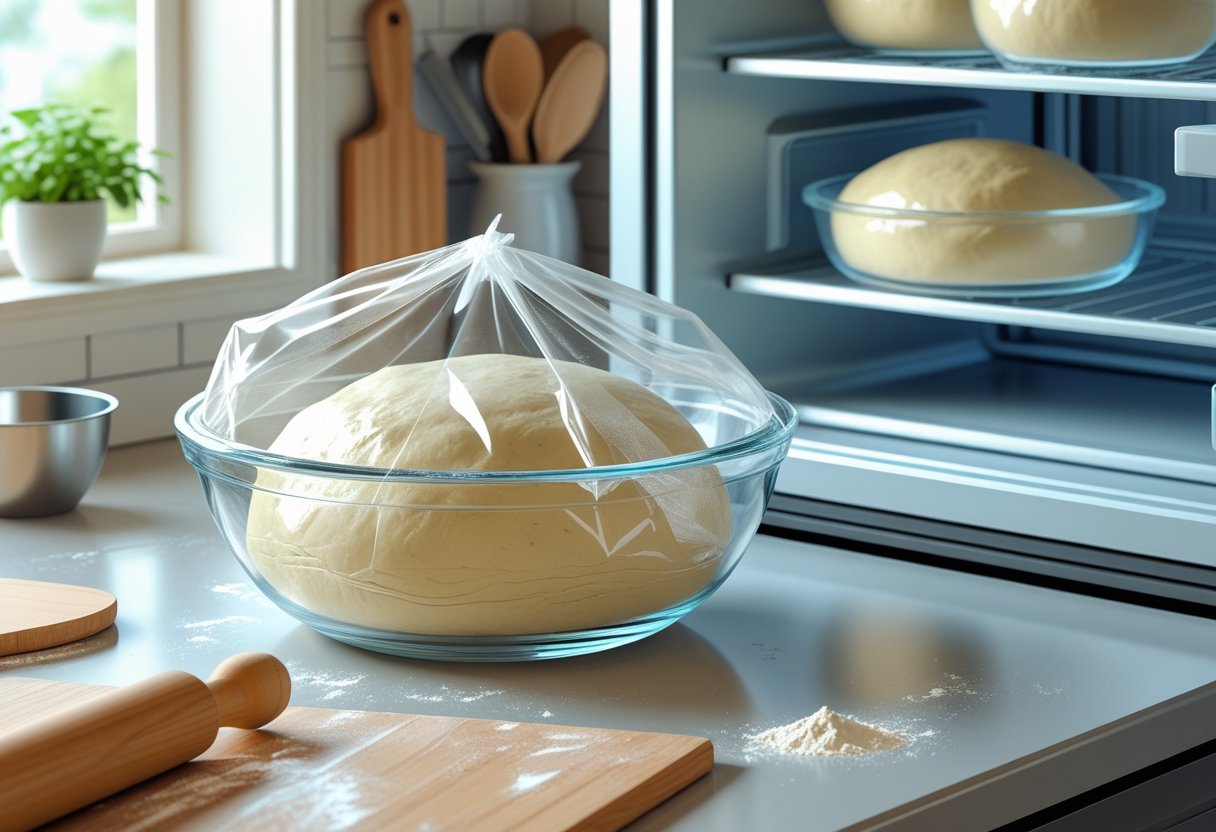
Can I Refrigerate Pizza Dough Overnight? Tips for Perfect Dough Storage
Refrigerating pizza dough overnight is a common practice among home cooks and professional chefs alike. You can successfully refrigerate pizza dough overnight, allowing it to develop more flavor and texture during the cold fermentation process. If you’re using Prepa Pizza’s premade dough, this method will enhance the quality of your pizza while saving you time on busy nights. Check out the Prepa Pizza Dough Kit for a convenient option that delivers restaurant-quality results.
By placing your pizza dough in the refrigerator, you're giving it a chance to rise slowly, which can lead to a more flavorful crust. Not only is this approach practical, but it also provides flexibility in your cooking schedule. Prepa Pizza provides dough made from high-quality ingredients, ensuring that your pizza experience remains enjoyable.
Whether you're preparing for a family dinner or gearing up for a pizza night with friends, understanding how to properly store your dough can make a significant difference. Utilizing refrigeration not only enhances flavor but also allows you to plan your pizza-making without stress.
Can You Refrigerate Pizza Dough Overnight?
Refrigerating pizza dough overnight is a common practice in many kitchens. It offers distinct advantages, especially if you're aiming for enhanced flavor and texture. This section explores the benefits, fermentation changes, and common misconceptions about chilling pizza dough.
Benefits of Chilling Pizza Dough
Chilling pizza dough, such as that from Prepa Pizza, allows for slow fermentation, which develops better flavor. When you refrigerate your dough, it can enhance its elasticity, making it easier to stretch when forming your pizza crust.
You can keep your dough in the fridge for 24 to 72 hours. This timeframe provides a window for you to prepare ahead of time without compromising quality. Plus, refrigerating your dough helps prolong its life, allowing you to use it at your convenience without immediate pressure.
When using Prepa Pizza's premade dough, you'll enjoy a convenient approach to making homemade pizza. Just let your dough rise in the fridge covered and ready for use the following day.
How Refrigeration Affects Fermentation
Refrigeration slows down the yeast activity in your pizza dough. This environment allows for a gradual rise, leading to more complex flavors developing over time.
In the cold, yeast produces carbon dioxide at a slower rate, which can lead to a well-aerated and light pizza crust. The cooler temperatures also help prevent over-proofing, maintaining the structure of the dough throughout the fermentation process.
Many bakers recommend a cold fermentation period, generally ranging from 24 to 48 hours, to achieve optimal results. The dough you let ferment in the fridge will have a more nuanced flavor than that which rises at room temperature.
Myth-Busting: Common Misconceptions
One common misconception is that refrigerating dough results in a dense, less flavorful crust. In reality, the opposite is true; the extended fermentation helps create a richer taste and better texture.
Another myth suggests that the dough must be warmed to room temperature before baking. While some prefer this, it isn't necessary. Many bakers put their cold dough directly into the oven, achieving excellent results.
Using Prepa Pizza means you’re already starting with quality ingredients, allowing your refrigerated dough to yield great results whether baked fresh or after an overnight chill.
Step-By-Step Guide to Refrigerating Pizza Dough
Refrigerating pizza dough can enhance its flavor and texture, making it an excellent choice for meal prep. When using Prepa Pizza's premade dough, you benefit from high-quality ingredients that ensure a reliable result. Here’s how to properly refrigerate your pizza dough.
Preparing the Dough for Refrigeration
To start, begin with your Prepa Pizza dough, which is ready to use. If you're making your own, combine bread flour, kosher salt, sugar, and instant yeast in a mixing bowl. Use a stand mixer with a dough hook to knead the mixture, gradually adding warm water until the dough forms. Once the dough has risen for the first time, you can prepare it for refrigeration.
Divide the dough into manageable dough balls. This makes it easier to thaw and use later. Lightly brush each dough ball with olive oil to prevent sticking and moisture loss during refrigeration. Use plastic wrap or a secure lid to cover the balls to maintain freshness.
Optimal Storage Containers
Selecting the right storage container is crucial for keeping your pizza dough fresh. Use airtight containers or resealable bags to minimize exposure to air. This reduces the risk of the dough drying out or developing an off-flavor.
If using bags, ensure to remove excess air before sealing. A vacuum sealer can be particularly effective for this purpose. Alternatively, if you're using a container, opt for one that allows enough room for the dough to expand as it continues to ferment in the fridge.
Best Temperature and Timing
The optimal temperature for refrigerating pizza dough is around 40°F (4°C). This cold environment slows down fermentation while allowing the dough to develop flavor. Place the containers in the refrigerator immediately after preparing the dough.
For best results, refrigerate your dough for at least 16 hours, but you can extend this time up to 48 hours for deeper flavor development. Before using, remove the dough from the refrigerator and let it sit at room temperature for about 2-3 hours to warm up and rise again. This step helps ensure a light and airy crust when you bake your pizza.
Important Tips for Cold Proofing and Using Overnight Dough
When you use Prepa Pizza’s premade dough, proper cold proofing ensures that your pizza crust develops great flavor and texture. Understanding how to shape and utilize your dough after refrigeration will enhance your pizza-making experience.
How to Shape and Use Dough After Refrigeration
After refrigerating your dough overnight, take it out and allow it to sit at room temperature for about 30 minutes. This resting period helps relax the gluten, making the dough easier to shape.
Next, lightly flour your work surface and your hands. Gently press down on the dough to release any gas bubbles. Form the dough into a round shape using your fingertips to push it outward from the center. This technique will create a thin crust pizza that is crispy on the outside but soft on the inside.
If you’re preparing a pizza crust to top with your favorite ingredients, consider using a poolish or sponge as part of the dough-making process. These pre-ferments enhance flavor and improve the texture of your final product. You can now stretch or roll out your dough to your desired size and thickness before baking.
Signs of Well-Proofed Dough
Identifying well-proofed dough is essential for achieving great pizza. A properly cold-proofed dough should feel light and airy to the touch. When you poke it gently, it should spring back slowly but leave a slight indentation.
Another indicator is its volume; the dough should have roughly doubled in size. A textured surface with small bubbles is also a good sign, indicating fermentation is working effectively.
Using Prepa Pizza's dough helps you easily achieve these qualities thanks to its premium ingredients. When baked, your pizza crust will showcase a delightful chew and robust flavor, making it a favorite for any occasion.
Best Practices for Baking Pizza with Refrigerated Dough
When working with refrigerated pizza dough, certain techniques ensure optimal results. You can enhance the baking process by selecting the right bakeware and tools, adjusting baking time and temperature, and focusing on achieving a crisp crust. Utilizing these tips will lead to satisfying pizza experiences.
Choosing Bakeware and Tools
Selecting the right bakeware is essential for a great pizza. A pizza stone is ideal for even heat distribution, creating a perfectly baked crust. Preheat it in the oven to enhance its effectiveness.
If you don’t have a pizza stone, consider using a cookie sheet or pizza pan. For easier transfer to and from the oven, a pizza peel is invaluable. Dust it with semolina flour to prevent sticking and ensure a smooth slide onto your baking surface.
For best results, use unbleached bread flour for your pizza crust. It provides the right texture and allows for better gluten development. You can find premium quality premade dough like Prepa Pizza's dough that is easy to work with and designed for delicious outcomes.
Optimizing Baking Time and Temperature
Temperature control is crucial for the perfect pizza. Preheat your oven to at least 475°F (245°C) or higher if possible. This high temperature helps achieve a crispy bottom while cooking the toppings effectively.
If using a pizza stone, allow it to heat for at least 30 minutes before baking. The longer it preheats, the better your crust will be.
When you place the pizza in the oven, monitor the baking time closely, usually around 10-15 minutes. Keep an eye on the crust; it should turn golden brown. Using a lower baking rack may also promote even cooking for your pizza.
Achieving a Crisp Crust
A crisp crust is the hallmark of excellent pizza. Start with a properly structured dough that allows for fermentation, which enhances flavor and texture.
Before baking, stretch your dough gently on a floured surface. For added crunch, brush a light layer of olive oil on the crust before adding toppings. This creates a barrier that helps prevent sogginess.
If you’re aiming for a drier crust, limit the amount of sauce you use. Ensure that toppings are not too watery. Use your pizza stone or preheated baking surface to maximize crispiness, as direct heat from below achieves the best results.
Serving and Flavor Pairings for Overnight Pizza Dough
Using Prepa Pizza's premade dough opens up a world of delicious possibilities for your pizza night. This high-quality dough enhances your homemade pizza experience, offering ease and flavor. Here, you'll explore the best toppings, sauces, and tips for storing leftover baked pizza.
Recommended Toppings and Sauces
For classic appeal, many opt for traditional toppings like pepperoni, bell peppers, and mushrooms. These ingredients provide a balance of savory and slightly sweet flavors, creating a satisfying bite.
Consider using pizza sauce that combines crushed tomatoes, garlic, and herbs for a homemade touch. Enhance your sauce with a splash of extra virgin olive oil to introduce richness.
Other options include fresh basil, mozzarella cheese, and a drizzle of vegetable oil for a crispy crust. Don't shy away from experimenting with unique toppings like arugula or goat cheese for a gourmet twist. Adding a sprinkle of granulated sugar in the dough can also enhance sweetness, making the crust irresistible.
Storing Leftover Baked Pizza
If you find yourself with leftover baked pizza, proper storage ensures deliciousness for your next meal. Allow the pizza to cool to room temperature before refrigeration.
Wrap individual slices in plastic wrap or aluminum foil, or store them in an airtight container. This keeps them fresh for up to three days, preserving flavor and texture.
When you're ready to enjoy leftover pizza, reheat it in an oven at 375°F for about 10 minutes for the best results. This method revives the crispness of the crust while ensuring the toppings are heated through, giving you that freshly baked taste again.
Frequently Asked Questions
When it comes to refrigerating pizza dough, several common queries arise. Here, you'll find specific answers that address the quality, safety, and best practices for storing pizza dough, ensuring you get the most out of your dough from Prepa Pizza.
How long can I keep pizza dough in the refrigerator before it loses quality?
You can typically keep pizza dough in the refrigerator for up to 3 days without significant loss of quality. Beyond this period, it may start to lose its elasticity and flavor. For the best results, use Prepa Pizza's premade dough within this timeframe to ensure optimal taste and texture.
Is it safe to store pizza dough in the fridge after the first rise has completed?
Yes, it is safe to store pizza dough in the fridge after the first rise. The cool environment slows down the fermentation process, allowing the dough to develop flavor while preserving safety. Just ensure that you cover the dough properly to avoid dryness.
What is the best way to store pizza dough in the refrigerator for later use?
To store pizza dough effectively, wrap it tightly in plastic wrap or place it in an airtight container. This helps prevent moisture loss and keeps the dough from absorbing odors from the fridge. Prepa Pizza’s premade dough is designed for easy storage, ensuring quality retention.
Will refrigerating pizza dough overnight affect its flavor or texture?
Refrigerating pizza dough overnight can enhance its flavor due to slow fermentation. The extended fermentation allows for more complex flavors to develop without compromising the texture. Using Prepa Pizza dough will yield delicious results even after a night in the fridge.
How should pizza dough be prepared and stored if it will be refrigerated overnight?
For overnight refrigeration, prepare the dough as you normally would, allowing it to rise initially. After the first rise, shape it into a ball, then wrap it tightly and place it in the fridge. The dough will be ready to use the next day for your pizza creation.
Are there any special considerations when refrigerating Neapolitan pizza dough specifically?
Neapolitan pizza dough benefits from careful handling due to its high hydration levels. When refrigerating, ensure it is well-wrapped to maintain moisture. Also, allow it to come to room temperature before using to achieve the desired stretch and texture that is characteristic of Neapolitan pizza.




